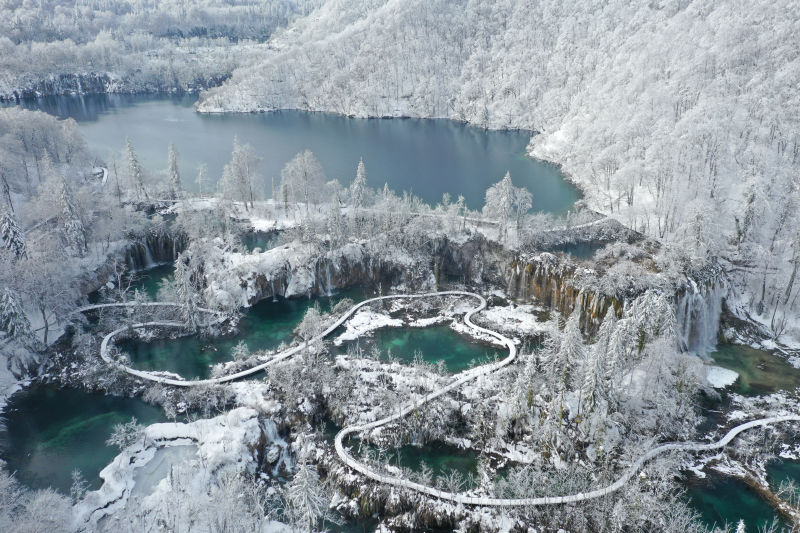Lunika - The Unique Wines of Kanfanar
- Andrea Seifert

- Aug 7, 2017
- 3 min read
A soft breeze mildens the hot sun in Istria. It is almost noon and we are following Mr Daniel Bastijančić in his vineyard in the village of Brajkovići near Kanfanar. The breeze is the secret of these vineyards, tells Daniel while he proudly presents 80 years old vine, planted by his grand-grandfather. And it is not only good Istrian wines produced here: these wines are from eco-production.

For those over eagerly oriented wine lovers, eco-wine is nothing else but old wine production technique. Modern branding calls it also biodynamic wines. Basically, it is wine without added sulphites. In viticulture, there is even stronger need to care for the right soil and atmosphere. Kanfanar is luckily in the best spot. The climate is good and there is no excessive humidity, and thus no particular illness for the grapes.
Daniel and his father Ivan continue a family tradition in viticulture and run a family business of Lunika winery. Why Lunika? Apart from having acronyms of Daniel’s daughters Lucija and Anika, it also resembles the Italian word L’Unica (the only one, the unique). Indeed, every wine is unique, but the ones we have tried in the tasting room is really good. The Bastijančićs told us why – they make it from the grape! It is shameful to realise how much is the Croatian wine market overflooded with cheap wines full of chemical ingredients. People like Bastijančić are here to warn us what are we missing when we roam the supermarkets.
Ours is a rather mild comment when we heard that even Oz Clarke favoured Bastijančić’s wines on this year’s annual Istrian wine festival Vinistra. Together with Benvenuti, Coronica, and Roxanich, Bastijančić is listed as the prime wine stop for German tourists in the newest issue of the German tourism magazine for Istria, the Istrien Magazin. So, what’s the whole story about?

Partly, this recognition lies in the friendliness and hospitality of Bastijančić family. Nothing was prepared before, as we have called the winery only two hours before our arrival (shame on us!), but Ivan and Daniel have been keen to introduce us to every flavour and scent under Lunika trademark.
We’ve started with tasting the Istrian Malvasia, macerated for six months. The floral notes and refreshing yet serious taste give us the first surprising pause. Then, we tried Teran 2015, macerated for a year, with its original ruby colour, rich scent, spicy and hard taste. Excellent wine for boškarin. Oh yes, that is the reason why we went to Kanfanar in the first place. As it is the town of the Istrian ox, we questioned Mr Ivan how was it in the past, did they eat ox meat as today. No, they didn’t. We also didn’t think they did.

The ox was primarily a labour force on Istrian fields and it ended in butchery only after years of working. Most families had oxen. Bastijančićs had eight. And none was used to ride on, as we teased our new recruit Matija and challenged him to hop on one horned beast. Istrian ox is a very mild animal, but it surely rediscovers his ill temper when someone wants to ride on his back.
One of the favourite wines of Lunika is for sure the Red Muscat 2015. This is a unique vine in Istria, as the family preserved the original grape in the oldest part of the vineyard. Even the oenologists from Poreč came in 1984 to Mr Ivan and asked him to sell whole annual quantities. Thus, every red Muscat you try today in Croatia stems from the Lunika’s vineyard! The wine is really easy to enjoy in, as it is milder from other Istrian red sorts and yet preserves a classic taste of red wines on the peninsula.

Noon is almost here and we wonder what did guys that had eight Istrian oxen eat when they were young. Mr Ivan remembers vividly. Minestrone (maneštra) was a staple food, and one couldn’t get away from this thick soup. Every Monday their household had jota on the menu, the bean stew with turnip or cabbage and occasionally some dried meat inside. Potatoes, beans, cabbage was the basis of almost every home in Istria at that time. The family had sheep, and their luxury was to enjoy whey, praised today for its health benefits.
Our own benefit was to end this visit with excellently sweet Yellow Muscat, whose amber colour is as enchanting as is its honey note. This sweet finish confirmed the strong advice to anyone looking for beautiful Istrian wines. You can taste it if you contact Bastijančić family here: Vina Lunika Brajkovići, Kanfanar +385 99 471 1800 podliniju@gmail.com https://www.facebook.com/vina.lunika
Gallery:


































Comments